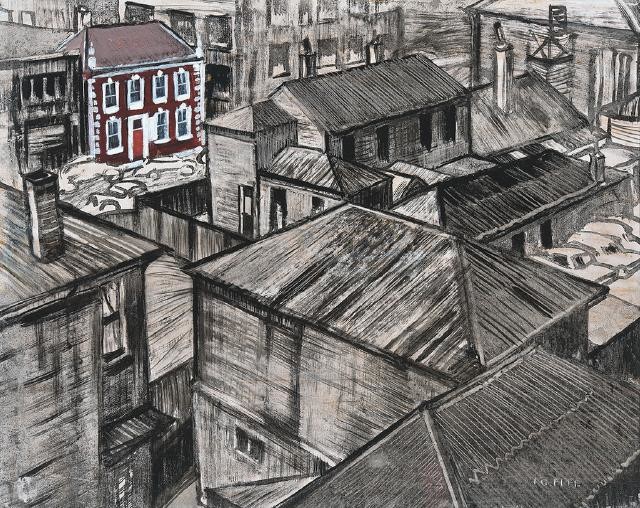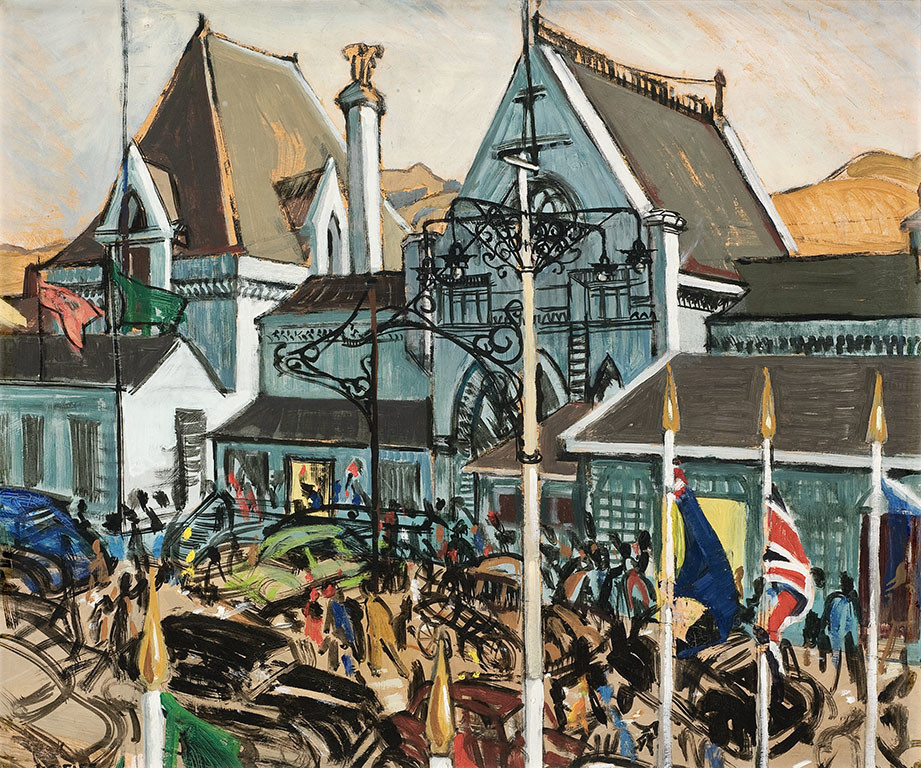Giovanni Battista Piranesi
Italy, b.1720, d.1778
The Drawbridge, Plate VII (second state) from the series Invenzioni Capric di Carceri
- 1761
- Etching with engraving on paper
- Purchased 1984
- 713 x 538mm
- 84/40
Tags: arches, bridges (built works), interior, lamps (lighting devices), monochrome, people (agents), prisons (buildings), spiral stairs, steps (stair units)
Giovanni Battista Piranesi’s The Drawbridge is one of sixteen plates from a folio of prints depicting imaginary prisons that has repeatedly haunted and inspired writers, artists and architects for over two and a half centuries. Three of Piranesi’s Carceri engravings, for example, were included in Alfred H. Barr’s exhibition Fantastic Art, Dada, Surrealism at the Museum of Modern Art in New York in 1936.
First issued in 1749–50, but attracting little attention to begin with, the series was republished with heavily reworked plates in 1761, yielding darker, more detailed and more resolved prints that brought an attendant increase to their public reception and acclaim. (Above ground, 2015)
Watch an animation based on Piranesi's Carceri prints, created by Grégoire Dupond.
Exhibition History
This is one of 14 etchings by Giovanni Battista Piranesi known as the Carceri d’Invenzione (Prisons) set. They are the most stark and creative images of Piranesi’s graphic work, in which he explored the full potential of the abstract compositional effect of light and shade. Piranesi first sketched the scenes in Venice, possibly as designs for stage sets. He then re-etched them with architectural details and deeper shadows for publication in 1760/1761. His etchings are considered to be a forerunner of late 18th century Romanticism, with its taste for melodrama and elemental fear, often coupled with picturesque ruins.
Born in northern Italy, Piranesi was the son of a stonemason. He first learned architecture but, when he settled in Rome in 1740, he studied etching under Guiseppe Vasi (1710 -1782), one of the leading illustrators of his time. Throughout his career Piranesi devoted himself to engraving the great monuments of Roman antiquity and the Renaissance. He was knighted in 1766 for his contribution to Italian art.













